Case Studies.
Add Case Study
Our Case Study database tracks 8,303 case studies in the global enterprise technology ecosystem.
Filters allow you to explore case studies quickly and efficiently.
Filters
-
(6)
- (4)
- (1)
- (1)
-
(5)
- (5)
-
(3)
- (1)
- (1)
- (1)
-
(3)
- (1)
- (1)
- (1)
-
(3)
- (2)
- (1)
- (1)
- View all 8 Technologies
- (5)
- (4)
- (2)
- (2)
- (2)
- View all 12 Industries
- (5)
- (3)
- (2)
- (2)
- (1)
- View all 8 Functional Areas
- (5)
- (1)
- (1)
- (1)
- (1)
- View all 9 Use Cases
- (2)
- (1)
- (1)
- (1)
- (1)
- (1)
- View all 21 Suppliers
Selected Filters

|
System 800xA at Indian Cement Plants
Chettinad Cement recognized that further efficiencies could be achieved in its cement manufacturing process. It looked to investing in comprehensive operational and control technologies to manage and derive productivity and energy efficiency gains from the assets on Line 2, their second plant in India.
|
|

|
Honeywell - Tata Chemicals Improves Data Accessibility with OneWireless
Tata was facing data accessibility challenges in the cement plant control room tapping signals from remote process control areas and other distant locations, including the gas scrubber. Tata needed a wireless solution to extend its control network securely to remote locations that would also provide seamless communication with existing control applications.
|
|

|
Process Control System Support
In many automated production facilities, changes are made to SIMATIC PCS 7 projects on a daily basis, with individual processes often optimised by multiple workers due to shift changes. Documentation is key here, as this keeps workers informed about why a change was made. Furthermore, SIMATIC PCS 7 installations are generally used in locations where documentation is required for audits and certification. The ability to track changes between two software projects is not only an invaluable aid during shift changes, but also when searching for errors or optimising a PCS 7 installation. Every change made to the system is labour-intensive and time-consuming. Moreover, there is also the risk that errors may occur. If a change is saved in the project, then the old version is lost unless a backup copy was created in advance. If no backup was created, it will no longer be possible to return to the previous state if and when programming errors occur. Each backup denotes a version used by the SIMATIC PCS 7 system to operate an installation. To correctly interpret a version, information is required on WHO changed WHAT, WHERE, WHEN and WHY: - Who created the version/who is responsible for the version? - Who released the version? - What was changed in the version i.e. in which block or module of the SIMATIC PCS 7 installation were the changes made? - When was the version created? Is this the latest version or is there a more recent version? - Why were the changes made to the version? If they are part of a regular maintenance cycle, then is the aim to fix an error or to improve production processes? - Is this particular version also the version currently being used in production? The fact that SIMATIC PCS 7 projects use extremely large quantities of data complicates the situation even further, and it can take a long time to load and save information as a result. Without a sustainable strategy for operating a SIMATIC PCS 7 installation, searching for the right software version can become extremely time-consuming and the installation may run inefficiently as a result.
|
|
_10.jpg)
|
Cloud-based healthcare solution for Royal Philips
Royal Philips wanted to launch its cloud-based healthcare solution HealthSuite Digital Platform in China to deliver services to help cope with challenges related to urbanization and population growth. Philips wanted to achieve this goal by combining mobile, cloud computing and big data technologies. To bring this platform and product to market, Philips required cloud computing and local technical service capabilities in China, in addition to a flexible IT infrastructure that could handle user requests.
|
|
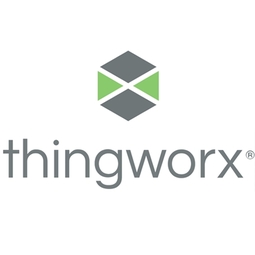
|
Delivers Seamless Scalability to IOTATOI
IOTATOI is a division of Power Agent Systems that has developed an edge server called the Universal Monitoring System (UMS). IOTATOI is using UMS as an edge tier data collector to monitor backup battery arrays in manufacturing, mines, and chemical plants. This experience with battery backups led IOTATOI to expand the system to any condition that can be monitored by sensors such as vibration, heat, temperature, and flow. IOTATOI found they needed to move from their original middleware to something that would allow greater scalability and to also present information in a much broader way allowing them to dynamically look at the information and perform benchmarking analysis, feeding the data into analytics engines and creating a much more actionable view.
|
|

|
Advanced Pharmaceutical Manufacturing
Direct communication between departments, plant floor operations, and management is an ongoing challenge due to lack of real-time collaboration around actual data to help improve process flow and on-time order delivery.
|
|
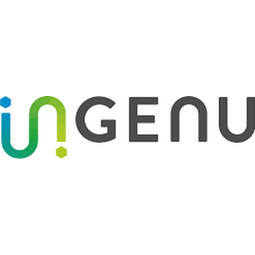
|
Intelligence for Digital Oilfield (WellAware)
WellAware was exploring the market for a reliable solution for collecting data from its customers’ remote well locations. According to WellAware CEO, Matt Harrison, the company’s customers have a tremendous need to tap into the intelligence provided by the digital oilfield. In selecting a provider for its network, WellAware compared the features of an array of communication technologies. Cellular provided adequate coverage, but at the rate of $25-$50 per month per device, the cost was extremely high. Satellite was even more expensive, in excess of $100 per month per device. As a typical oilfield consists of more than 1,000 wells, implementation of these technologies would quickly become cost-prohibitive. Additionally, cellular and satellite technologies were only able to deliver between 85-95 percent data availability and were not able to transmit data at sub-minute frequencies. This was not sufficient to meet the reliability expectations of WellAware’s customers.
|
|

|
Hitachi Data Systems (Hitachi) - Global Manufacturers Improve Yield by 90 Percent
The company’s polymer mixing process was producing output of inconsistent quality, with yields sometimes dipping as low as 50% or 60%. The scrapping of poor batches created huge costs and was crippling production capacity. The root cause was traced to ever-changing product specifications, in addition to variations in a range of production parameters. Production engineers were unable to stabilize the process using traditional approaches as mixing polymer was stubbornly unstable and each new product formulation only exacerbated the problem. To solve this issue, this global manufacturer needed a solution that provided the following capabilities: • Ingest and integrate Internet of Things (IoT) data from machinery, sensors, the environment and other sources • Discover the critical factors and optimal process parameters through correlation, visual analysis, and optimization algorithms • Provide deep process insight, enabling daily decision support and continuous improvement • Dynamically and continuously optimize the process through machine learning
|
|
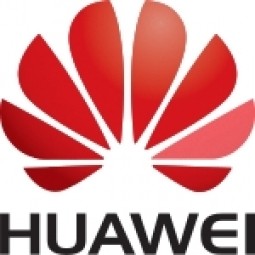
|
Drug Maker Takes the Right Prescription
China Pharm decided to build a cloud-based platform to support the requirements of IT planning for the next five to ten years which includes a dynamic and scalable mail resource pool platform. The platform needed to have the following functions: all nodes support redundancy, ensuring service continuity and good user experience, simple and easy-to-use user interfaces for end users and administrators and good compatibility and supports smooth capacity expansion.
|
|

|
Ascend Performance Materials Case Study
Ascend operations must access multiple software systems to manage day-to-day operations in an effective and secure manner. These systems generate large sets of data which contain critical information pertaining to management systems, planning and cost information in business systems and energy consumption. As a result, Ascend management was challenged with creating relevant reports reflecting performance measures in overall context of their operational process. The company’s previous process entailed collecting and analyzing data manually which was not effective, since the information collected was generated after the fact, and was too complex for collaborative use across the organization.
|
|
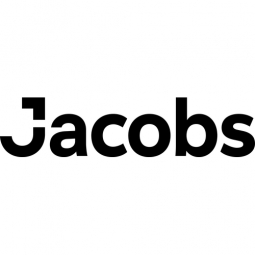
|
Industrial Workforce Mobility for Improved Safety & Operations
Huntsman Corporation, a global manufacturer and marketer of differentiated chemicals, undertook an aggressive program to eliminate injuries, product defects, and environmental releases at their Port Neches facility. Termed “Project Zero”, this program required a completely mobile solution to empower operations and maintenance personnel to capture defects, track work progress and make process and safety related decisions in real-time.
|
|
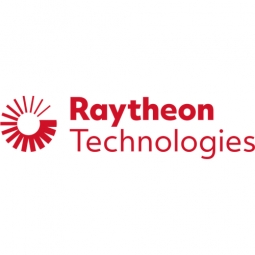
|
Flow Battery Technology Changes Energy Distribution
The size of the cell stacks and the costly materials needed for construction of traditional flow batteries have kept the technology from becoming commercially viable. The solution is needed to make the stacks smaller and less expensive without losing any of the power.
|
|

|
New All Wireless Warehouse with Samsung Wireless EnterpriseTM
Igus planned to move to a new, larger facility and began to look for a more scalable, manageable and robust WLAN solution. Igus immediate needs were focused on a dedicated WLAN infrastructure able to integrate with their current communication system.
|
|
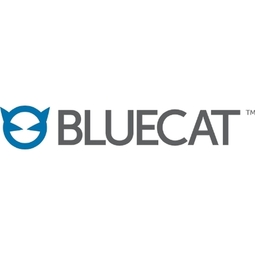
|
Global Deployment of IPAM at Top Tier Pharmaceutical Company
This large pharmaceutical company was facing the following challenges: - Solidify the network as the infrastructure across which their intellectual property is developed, quality-assured and delivered to market while enhancing global network security, speed and agility. - Better manage the process of merging acquired companies into the main corporate network. - Reduce business risk by implementing role-based access, full change tracking and the replacement of fragmented, spreadsheet-based management of IPAM data. - Increase the ROI on network-associated IT investments, such as virtualization, cloud and SDN.
|
|
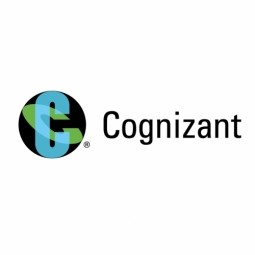
|
Remake Enterprise-to-production System
The client was running a legacy material flow tracking system and wanted to replace the system with a more effective one as the system was increasingly expensive to maintain and support and also was not extendable. The client's IT landscape was filled with modern applications and it was difficult to interface the material flow tracking system with modern applications.
|
|
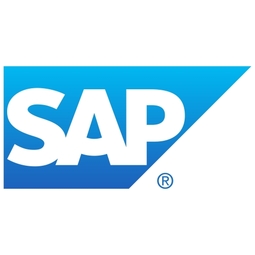
|
Embracing Business Success in Real Time
· Increase control over growing Big Data to improve business decisions · Manage data for 28,000 biotechnology stockkeeping units in the fields of microbiology, molecular biology, animal cell cultures, plant tissue cultures, and lab ware for laboratory chemicals · Accelerate report generation and analysis with real-time data
|
|
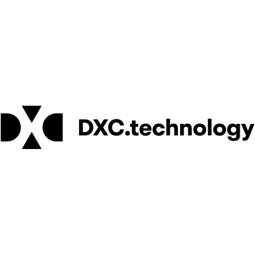
|
Printing Giant Innovates Processes with SAP
Agfa Graphics wanted to gain greater insight into performance and costs, and to improve planning through far-reaching integration with shop-floor legacy systems. Agfa Graphics needed to build and integrate a system that routes finished products to clients worldwide on a just-in-time basis, taking into account urgent and rush orders.
|
|

|
Discrete Manufacturing Industries (Fiberglass Pipe)
The implementation of ERP software in a Discrete Manufacturing organization needs to be strategic, irrespective of its size and capacity. The client had already implemented an ERP system which fulfilled their requirements but was not efficient enough. Efficiency here meant Synchronized Planning, Updating and Multisite Planning. Planning at client’s place was done outside the ERP system. Lack of proper synchronization to the ERP system paved way to huge delays in the changes getting updated in the system. These delays caused disruption in achieving delivery schedules. Multisite Planning is a solution to an organization which has multiple production units (may or may not be geographically separated) and thus needs planning across these units to synchronize production activities within them. The client also has multiple factories and hence Production Planning control is very essential in their case. Since Multisite planning was not possible with Baan ERP system, this was another bottleneck for the client.
|
|
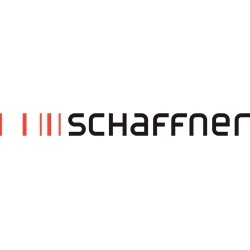
|
ECOsine Active Increased Reliability in the Paper Industry
The paper and pulp industry is interlinking intelligent hi-tech machines to highly efficient production lines. Higher power DC and AC motor drives perform the automation tasks. Every kind of interference that negatively affects the reliability and safety of the installation may lead to production downtime and consequently to significant financial losses. AC and DC motor drives are so-called non-linear loads as they draw a nonsinusoidal current from the grid. Resulting harmonics of current and voltage can interfere with the operation of nearby consumers and overload the electrical infrastructure. In this particular application, the load cycles of the drives often caused interruptions in the production process because of disturbances coupling into the fieldbus system.
|
|

|
Saving Megawatts with Voltage Optimization
Conservation voltage reduction is the practice of operating electric distribution systems at voltages in the lower range of allowable levels, thereby improving the efficiency of many electric utilization devices (e.g. induction and synchronous motors, transformers, lighting systems, etc.).This approach can be applied to a variety of industrial settings; however, using an advanced real-time control system such as AdaptiVolt™ is critical to ensuring that voltages don’t drop to levels that put important processes at risk. AdaptiVolt™ monitors voltages through the facility in real-time and makes control decisions to safely reduce voltage, thereby achieving energy efficiency gains while maintaining process reliability
|
|

|
A.P. Plasman, Inc. Case Study
The A.P. Plasman Corporation manages multiple facilities with multiple processes, and when they were looking for an automation solution for their paint facility in Tecumseh, they were looking for a solution that could restrict access, deploy easily, and provide the ability to modify the application quickly to suit changing needs.
|
|
.jpg)
|
Ontario-Based ORBIS Plant Breaks the Mold
ORBIS Corporation strives to make a positive difference in communities in which it operates and it is committed to improving the environment. In 2010, ORBIS launched its first Annual Sustainability Report to ensure they provide solutions that both create economic value and are as friendly to the environment as possible.With electricity prices rising year after year, ORBIS was determined to reduce their energy demand and cut costs.
|
|

|
Intelligently Managed Business Processes (Belcher Industries)
Belcher Industries can with right be classified as a high-risk business due to the nature of the work they perform. The risks include public liability and project risks including fixed cost, time penalties and product quality. Belcher experienced the following problems – often imposing serious risks for the business: • Belcher Industries are subjected to OSHA regulations. The absence of the necessary controls can result in penalties and increased premiums. Belcher wanted to ensure that the necessary controls are in place to contribute to a 100% no incident reputation. • Immediate productivity improvement in the workshop was a major objective. • Senior management often travels and improved control over task management and the ability to monitor work from off-site locations were high priorities. • Tasks were allocated to staff during meetings. These tasks disappeared from Meeting Minutes; they were often not performed within the time required; or they were misunderstood and the work performed was not according to specification. This resulted in additional labour and material cost as well as time lost. • Meetings were held with clients. Design specifications were agreed or decisions made, but there was no record of the supporting design documentation or the design agreements reached. This resulted in disputes with clients often to the detriment of Belcher. • Various registers are required to support ISO certification. Even though Belcher had all the registers in place the systems were islands and not integrated. • A key objective was to integrate the existing accounting system with the new solution. • The existing BelcherTrac system, that included only job control, quotes and purchase orders, became out-dated. Replacing this system with the XMPro driven BelcherTrac enabled them to integrate loose standing processes and registers into one solution.
|
|

|
NIST Teams Up with Sparks Dynamics to Drive Down Energy Costs
Faced with an antiquated inefficient compressed air system and the challenge of fully benchmarking the existing system performance, NIST knew they needed a professional energy ally so they could focus on what they do best—technology and standards development.
|
|

